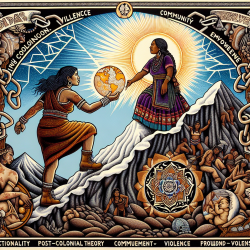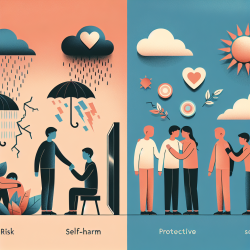Understanding Lateral Violence: A Call to Action for Practitioners
Lateral violence, a term describing aggression within systemically exploited groups, is a significant social concern within Indigenous communities, particularly affecting Indigenous women. The systematic literature review titled Indigenous Women’s Experiences of Lateral Violence: A Systematic Literature Review offers profound insights into this issue. This blog aims to translate these insights into actionable strategies for practitioners, emphasizing the importance of data-driven decisions and evidence-based interventions.
The Complexity of Lateral Violence
Lateral violence manifests in various forms, including bullying, gossiping, shaming, and intimidation. These behaviors are often covert, making them challenging to address directly. The review highlights that lateral violence is not only prevalent but also persistent, affecting the wellbeing and cultural identity of Indigenous women.
Understanding lateral violence requires a nuanced approach, informed by intersectionality and post-colonial theory. Intersectionality theory helps us see how overlapping social categories such as gender, race, and class influence experiences of oppression. Post-colonial theory, on the other hand, examines the historical and ongoing impacts of colonialism, which have contributed to the internalized oppression manifesting as lateral violence.
Implementing Research Outcomes
For practitioners working with Indigenous communities, it is crucial to incorporate the following strategies based on the research findings:
- Promote Awareness: Educate communities about the forms and impacts of lateral violence. Workshops and campaigns can empower individuals to recognize and address these behaviors.
- Foster Cultural Competency: Understanding the cultural contexts and historical traumas that contribute to lateral violence is essential. Practitioners should engage in continuous learning and reflection to enhance their cultural competency.
- Support Resilience and Empowerment: Encourage Indigenous women to connect with their cultural identities and support systems. Highlighting positive role models and community leaders can inspire resilience and resistance against lateral violence.
- Advocate for Policy Change: Work towards creating policies that promote cultural safety and inclusivity within institutions and workplaces. This includes anti-bullying and harassment policies that are sensitive to the unique experiences of Indigenous communities.
Encouraging Further Research
The review underscores the need for more research on lateral violence, particularly studies focusing on Indigenous women. Practitioners can contribute to this effort by collaborating with researchers to explore the intersections of identity and oppression further. By doing so, they can help develop more effective interventions and support systems tailored to the needs of Indigenous women.
Conclusion
Addressing lateral violence within Indigenous communities is a complex but necessary endeavor. By understanding the theoretical frameworks and implementing research-based strategies, practitioners can make a meaningful impact. To delve deeper into the findings and implications of this research, I encourage you to read the original paper: Indigenous Women’s Experiences of Lateral Violence: A Systematic Literature Review.










